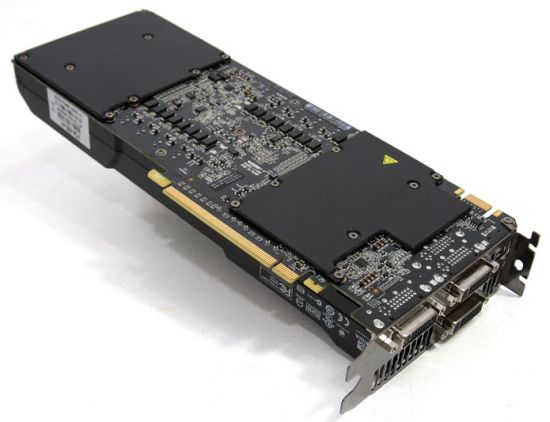
The R267.52 driver used by most of the reviewers for testing the GeForce GTX 590 does not offer a correct protection against over current especially when the GPU voltage is increased (see here: GTX 590 burns).
That’s why NVIDIA has released new drivers with a better OCP management: R267.84 and R287.85.
The default GPU voltage (or Vcore or VDDC) of the GTX 590 is around 0.93V (+/- 0.04V). NVIDIA recommends to not overvoltage the GPU (for example Vcore=1.200V) during overclocking. Here are NVIDIA’s guidelines for overclocking the HTX 590:
In the web release driver of GeForce GTX 590, we have added some important enhancements to our overcurrent protection for overclocking. We recommend anyone doing overclocking or running stress apps to always use the latest web driver to get the fullest protection for your hardware. Please note that overcurrent protection does not eliminate the risks of overclocking, and hardware damage is possible, particularly when overvoltaging. We recommend anyone using the GTX 590 board with the reference aircooler stick with the default voltage while overclocking, and avoid working around overcurrent protection mechanisms for stress applications. This will help maintain GTX 590’s great combination of acoustics, performance, and reliability. NVIDIA has worked with several watercooling companies to develop waterblocks for GTX 590, and these solutions will help provide additional margin for overclocking, but even in this case we recommend enthusiasts stay within 12.5-25mV of the default voltage in order to minimize risk.
These are guidelines only – any overclocking/overvoltaging can void your manufacturer’s product warranty.
At default voltage the GTX 590 is okay as NVIDIA said it to thinq.co.uk:
“Rest assured that the GTX 590 operates reliably at default voltages, and our 267.84 launch drivers provide additional levels of protection.”